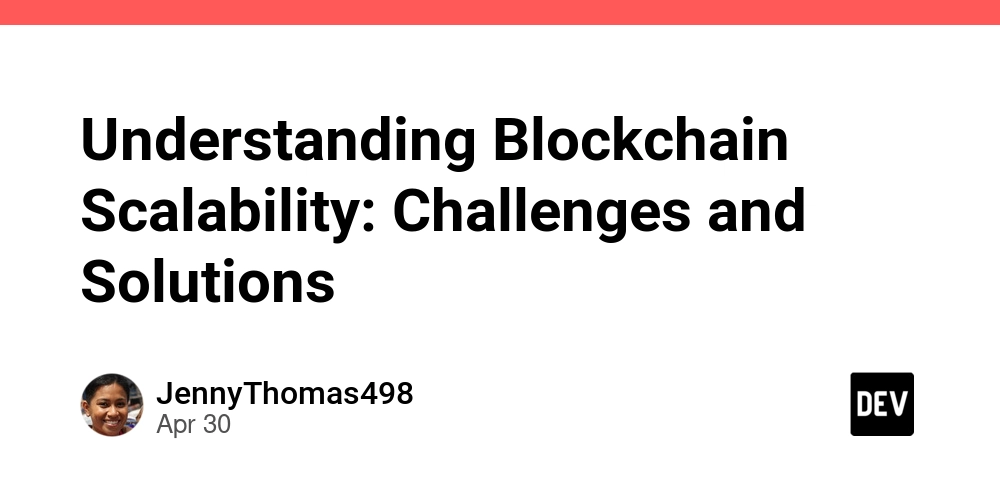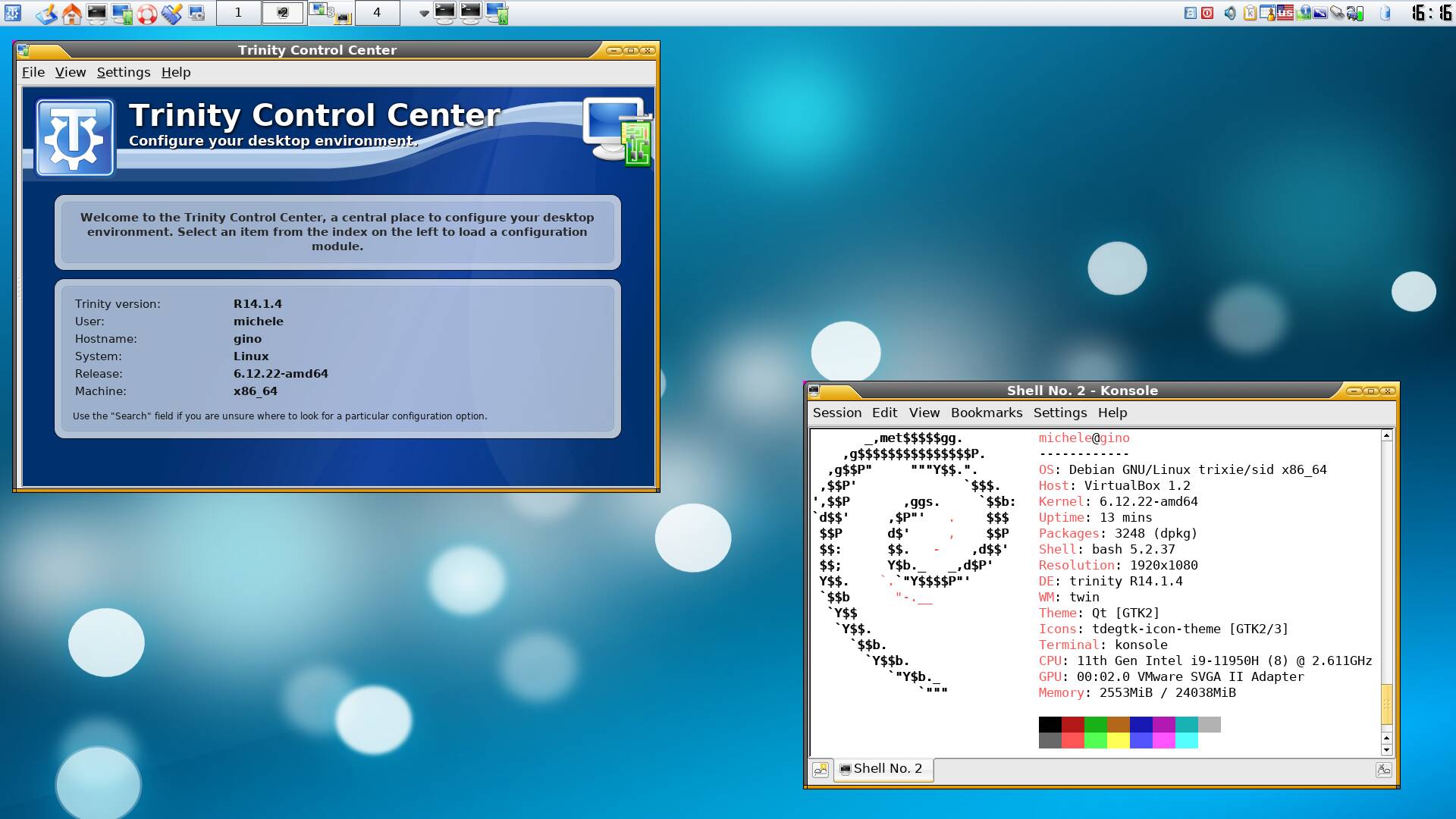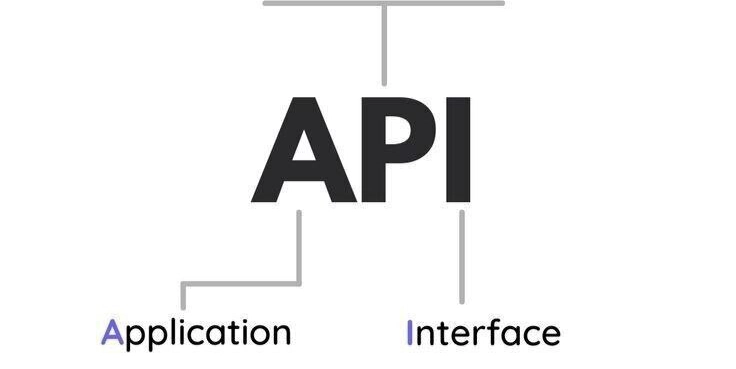Understanding Blockchain Scalability: Challenges and Solutions
Abstract Blockchain scalability remains one of the field's central challenges as networks evolve from niche experiments into global infrastructures powering finance, healthcare, gaming, and more. This post introduces the concept of blockchain scalability, provides historical context and key definitions, and dives deep into core scalability challenges, including network congestion and low transaction throughput. We also examine innovative solutions such as Layer 2 protocols, sharding, consensus mechanism upgrades, and blockchain interoperability. Practical applications—from decentralized finance (DeFi) to gaming—are highlighted along with a discussion of ongoing technical and adoption challenges. Finally, we explore future innovations while offering a clear summary for developers, investors, and enthusiasts. Introduction Blockchain technology has revolutionized trust models across industries by creating secure and decentralized systems. However, as adoption surges, maintaining performance under increasing workloads presents a significant hurdle. This challenge—known as blockchain scalability—is the ability of a distributed ledger to handle growing transaction volumes without sacrificing security or decentralization. As more participants join these networks, both real-time processing and data storage become critical. This article aims to deliver a comprehensive overview of blockchain scalability and its solutions, enabling technical experts and business leaders to understand, evaluate, and implement next-generation strategies. Background and Context Blockchain scalability can be traced back to the early days of Bitcoin when limited block sizes and slow confirmation speeds were acceptable trade-offs for decentralized security. As blockchain technology evolved, the need for high transaction throughput, robust security, and decentralization created a balancing act often described as the Blockchain Trilemma. This trilemma posits that it is challenging to optimize all three aspects—scalability, security, and decentralization—simultaneously. Historically, Bitcoin averaged about 7 transactions per second (TPS) while networks like Ethereum managed approximately 15–30 TPS. In stark contrast, traditional financial networks, such as Visa, process thousands of TPS. The clear gap between these rates highlights why scalability issues have become increasingly critical. For further reading on the underlying principles, please see What is Blockchain. The ecosystem surrounding blockchain scalability involves multiple layers of innovation: Consensus Mechanisms: Protocols such as Proof of Work (PoW) and Proof of Stake (PoS) have different performance metrics and energy requirements. Layer 2 Solutions: Off-chain mechanisms, such as state channels and sidechains, help relieve pressure from the main network. Interoperability Initiatives: Projects like Polkadot and Cosmos aim to connect various blockchains, distributing workloads and enhancing overall efficiency. These elements set the stage for the challenges and solutions we will explore next. Core Concepts and Features Blockchain scalability can be broken down into several interrelated concepts and features that enable networks to grow without performance degradation. 1. Network Congestion and Transaction Throughput Network Congestion: With increasing transaction volumes, blockchains sometimes struggle with backlogs. Limited block sizes result in longer wait times and higher fees, examples of which have been historically witnessed on Bitcoin and Ethereum. Transaction Throughput: The performance metric of transactions per second (TPS) is a fundamental indicator of scalability. Many researchers and developers work on methods to approach TPS rates comparable to traditional financial networks while ensuring that security and decentralization are maintained. 2. Storage Inefficiencies and Resource Intensity Storage Overhead: Blockchains require each node to store a copy of the entire ledger, which can become increasingly burdensome as transaction histories expand. Resource Intensity: Especially in Proof-of-Work systems, significant computing power and energy are necessary to secure the network. This has implications both for scalability and the environment. For further details on sustainable blockchain practices, refer to Sustainable Blockchain Practices. 3. Interoperability Blockchain Silos: Many platforms operate independently, resulting in a lack of seamless interoperability. This limits the effectiveness of large-scale distributed applications. Interoperability Solutions: Emerging protocols such as those described in Blockchain Interoperability and initiatives on platforms like Arbitrum (see Arbitrum and Blockchain Interoperability) create pathways for different blockchains to communicate, share data, and distribute workloads. 4. Advanced Solutions Numerous innovative

Abstract
Blockchain scalability remains one of the field's central challenges as networks evolve from niche experiments into global infrastructures powering finance, healthcare, gaming, and more. This post introduces the concept of blockchain scalability, provides historical context and key definitions, and dives deep into core scalability challenges, including network congestion and low transaction throughput. We also examine innovative solutions such as Layer 2 protocols, sharding, consensus mechanism upgrades, and blockchain interoperability. Practical applications—from decentralized finance (DeFi) to gaming—are highlighted along with a discussion of ongoing technical and adoption challenges. Finally, we explore future innovations while offering a clear summary for developers, investors, and enthusiasts.
Introduction
Blockchain technology has revolutionized trust models across industries by creating secure and decentralized systems. However, as adoption surges, maintaining performance under increasing workloads presents a significant hurdle. This challenge—known as blockchain scalability—is the ability of a distributed ledger to handle growing transaction volumes without sacrificing security or decentralization. As more participants join these networks, both real-time processing and data storage become critical. This article aims to deliver a comprehensive overview of blockchain scalability and its solutions, enabling technical experts and business leaders to understand, evaluate, and implement next-generation strategies.
Background and Context
Blockchain scalability can be traced back to the early days of Bitcoin when limited block sizes and slow confirmation speeds were acceptable trade-offs for decentralized security. As blockchain technology evolved, the need for high transaction throughput, robust security, and decentralization created a balancing act often described as the Blockchain Trilemma. This trilemma posits that it is challenging to optimize all three aspects—scalability, security, and decentralization—simultaneously.
Historically, Bitcoin averaged about 7 transactions per second (TPS) while networks like Ethereum managed approximately 15–30 TPS. In stark contrast, traditional financial networks, such as Visa, process thousands of TPS. The clear gap between these rates highlights why scalability issues have become increasingly critical. For further reading on the underlying principles, please see What is Blockchain.
The ecosystem surrounding blockchain scalability involves multiple layers of innovation:
- Consensus Mechanisms: Protocols such as Proof of Work (PoW) and Proof of Stake (PoS) have different performance metrics and energy requirements.
- Layer 2 Solutions: Off-chain mechanisms, such as state channels and sidechains, help relieve pressure from the main network.
- Interoperability Initiatives: Projects like Polkadot and Cosmos aim to connect various blockchains, distributing workloads and enhancing overall efficiency.
These elements set the stage for the challenges and solutions we will explore next.
Core Concepts and Features
Blockchain scalability can be broken down into several interrelated concepts and features that enable networks to grow without performance degradation.
1. Network Congestion and Transaction Throughput
- Network Congestion: With increasing transaction volumes, blockchains sometimes struggle with backlogs. Limited block sizes result in longer wait times and higher fees, examples of which have been historically witnessed on Bitcoin and Ethereum.
- Transaction Throughput: The performance metric of transactions per second (TPS) is a fundamental indicator of scalability. Many researchers and developers work on methods to approach TPS rates comparable to traditional financial networks while ensuring that security and decentralization are maintained.
2. Storage Inefficiencies and Resource Intensity
- Storage Overhead: Blockchains require each node to store a copy of the entire ledger, which can become increasingly burdensome as transaction histories expand.
- Resource Intensity: Especially in Proof-of-Work systems, significant computing power and energy are necessary to secure the network. This has implications both for scalability and the environment. For further details on sustainable blockchain practices, refer to Sustainable Blockchain Practices.
3. Interoperability
- Blockchain Silos: Many platforms operate independently, resulting in a lack of seamless interoperability. This limits the effectiveness of large-scale distributed applications.
- Interoperability Solutions: Emerging protocols such as those described in Blockchain Interoperability and initiatives on platforms like Arbitrum (see Arbitrum and Blockchain Interoperability) create pathways for different blockchains to communicate, share data, and distribute workloads.
4. Advanced Solutions
Numerous innovative methods have emerged to tackle the scalability challenge:
- Layer 2 Solutions: These include state channels (e.g., Bitcoin’s Lightning Network) and sidechains (e.g., Ethereum’s Raiden Network) that offload transactions from the main chain.
- Sharding: Dividing the network into shards, each handling a fraction of the overall transaction load, significantly increases throughput. Ethereum 2.0's upgrade roadmap is a prime example.
- Consensus Mechanism Enhancements: Transitioning from PoW to PoS or its variations, such as Delegated Proof of Stake (DPoS), reduces energy consumption and increases TPS.
- Compression Techniques: Advanced cryptographic tools like zk-SNARKs and zk-Rollups shrink the data footprint of transactions, speeding up verification while maintaining privacy. For further reading, check Zero-Knowledge Proofs on Blockchain.
The following table summarizes key challenges and corresponding solutions in blockchain scalability:
| Challenge | Impact | Potential Solutions |
|---|---|---|
| Network Congestion | Slow transaction speeds; increased fees | Layer 2 solutions (State Channels, Sidechains) |
| Low Transaction Throughput | Limited TPS compared to centralized systems | Sharding; Consensus enhancements (PoS, DPoS) |
| Storage Inefficiencies | Data bloat; resource intensive | Data compression techniques; off-chain storage solutions |
| High Resource Intensity (Energy Use) | Environmental impact; limited scalability | Transition to PoS; energy-efficient consensus algorithms |
| Lack of Interoperability | Data silos; fragmented ecosystem | Cross-chain bridges; interoperability protocols (Polkadot/Cosmos) |
Applications and Use Cases
Blockchain scalability transcends theoretical value—it fosters real-world engenderment across multiple sectors. Here are three practical examples:
Decentralized Finance (DeFi):
High TPS is crucial for seamless DeFi experiences. Scalability solutions enable platforms like decentralized exchanges and lending protocols to handle thousands of transactions per minute. As an example, Ethereum’s initiative to switch into PoS is directly motivated by rising demands in DeFi applications.Gaming and Digital Collectibles:
Blockchain-based gaming has exploded in popularity due to features like true digital ownership and tokenized assets. Scalability improvements allow for near-instant transactions, reducing latency critical in gaming. Projects integrating scalability improvements can support seamless in-game economies, where microtransactions are efficiently processed. Learn more about blockchain in gaming by visiting Arbitrum and Gaming.Healthcare and Supply Chain:
Secure and scalable blockchains provide immutable records across various industries. In healthcare, blockchain ensures data integrity for patient records while maintaining high throughput to handle large-scale operations. In supply chains, scalability supports real-time tracking of goods and enhanced transparency.
Other related uses include digital identity solutions, energy trading, and even voting systems—all of which demand a balance between speed, security, and decentralization.
Challenges and Limitations
Despite notable progress, several technical and adoption challenges persist:
Security vs. Scalability Trade-offs:
Increasing throughput or reducing block times often carries security risks. The inherent trade-off between high TPS and maintaining cryptographic robustness is a persistent challenge. Sophisticated methods like zk-Rollups aim to mitigate these risks, but perfect balance remains elusive.Centralization Risks:
Some scalability solutions—such as using sidechains or delegating consensus responsibilities (DPoS)—may inadvertently lead to centralization. Ensuring that decentralization is not compromised while improving efficiency is a delicate task. Investigate further topics on decentralization in blockchain via discussions on Arbitrum and Consensus Mechanisms.Adoption Barriers:
Industry adoption is not solely a technical issue. Regulatory uncertainties, transition costs, and developer familiarity create barriers to implementing large-scale improvements. As blockchain evolves, community-driven education efforts are key to overcoming these challenges.Interoperability Complexities:
Allowing different blockchain systems to communicate securely and efficiently is more complex than it might first appear. Multiple projects are working towards bridging these gaps, but real-world integration across ecosystems still faces hurdles.Energy Consumption:
Although transitioning away from PoW helps, energy consumption and environmental impact continue to be a major critique of blockchain systems. This is especially important when discussing scalability improvements in the context of sustainable development.
Below is a bullet list summarizing the key challenges:
- Security vs. Scalability Trade-offs
- Potential Centralization Risks
- Adoption and Regulatory Barriers
- Interoperability Complexities
- High Energy Consumption
Future Outlook and Innovations
The future of blockchain scalability is promising, with several trends suggesting a robust ecosystem of improvements:
Increased Adoption of Layer 2 Solutions:
With components like state channels and sidechains already in use, future protocols may see exponential growth in off-chain transaction processing. As the community pushes for greater efficiency, Layer 2 solutions will likely become the standard for many networks.Emergence of Hybrid Models:
Hybrid blockchains combining public and private attributes may pave the way, balancing open-access security with high-speed, enterprise-grade performance. Projects are exploring models that integrate seamless interoperability while retaining decentralized principles.Enhanced Consensus Models:
Consensus upgrades such as Proof of Stake and Delegated Proof of Stake continue improving scalability without incurring the energy costs of traditional PoW systems. More blockchains will likely adopt these mechanisms as the technology matures.Blockchain Interoperability Advances:
Interoperability initiatives, including bridges and consensus protocols akin to Arbitrum and Ethereum Interoperability, are set to empower seamless cross-chain interactions. This will open the door to novel decentralized applications that can pull resources from multiple blockchains while maintaining security.Data Compression and Zero-Knowledge Proofs:
With innovations like zk-Rollups and zero-knowledge proofs, the blockchain community is reducing data load and ensuring privacy. As these techniques improve, we expect to see even smaller data footprints and faster transaction validation.
For further insights on scalability innovations, check out interesting technical discussions on Exploring the Arbitrum DeFi Ecosystem: Revolutionizing Scalable Finance and Exploring the Symbiosis of Blockchain and Open Source Licensing.
Summary
In summary, blockchain scalability is a multifaceted problem that requires balancing the demands of security, decentralization, and efficiency. Key points from this post include:
- Network Congestion: Solutions like Layer 2 protocols reduce bottlenecks and improve transaction speed.
- Sharding and Consensus Upgrades: Innovations in sharding and evolving consensus mechanisms (e.g., PoS, DPoS) enable higher TPS and lower resource use.
- Interoperability: Efforts to connect disparate blockchains might be the gateway to a truly scalable and interoperable ecosystem.
- Real-World Applications: Improved scalability will unlock further adoption in DeFi, gaming, healthcare, and supply chains.
The balance between these components will define blockchain’s future. As the technology transitions into mainstream applications, the continuous development of privacy-preserving techniques and energy-efficient consensus protocols heralds a new era of scalable, secure blockchains.
For additional insights on blockchain scalability challenges and solutions, visit the original article on Understanding Blockchain Scalability: Challenges and Solutions.
Concluding Remarks
Blockchain scalability is not just a technical specification—it is the very foundation upon which the next generation of decentralized applications will thrive. By addressing congestion, improving transaction throughput, and ensuring sustainable practices, the blockchain community is paving the way for a future where decentralization and efficiency go hand in hand. With continual exploration of Layer 2 scaling, consensus innovations, and interoperability advancements, the future of blockchain is bright.
Key related topics for further exploration include:
- How Decentralized Finance is Shaping Blockchain Scalability
- The Role of Zero-Knowledge Proofs in Reducing Data Footprint
- Interoperability: Bridging Blockchain Islands for a Unified Ecosystem
As blockchain technology continues to mature, collaboration among developers, industry experts, and regulatory bodies will play a crucial role in realizing the full potential of scalable decentralized networks. Whether you are a developer aiming to build the next revolutionary dApp or an investor seeking sustainable technology, understanding blockchain scalability is essential to staying ahead in the digital revolution.
By merging technical insights with practical applications, the journey towards overcoming blockchain scalability challenges becomes clear. The rapid evolution of protocols and innovative solutions indicates that the seemingly insurmountable trade-offs of the blockchain trilemma may one day be resolved, ushering in a new era of efficient, secure, and truly decentralized digital ecosystems for the benefit of all.
Happy scaling!



































































































































































![[The AI Show Episode 145]: OpenAI Releases o3 and o4-mini, AI Is Causing “Quiet Layoffs,” Executive Order on Youth AI Education & GPT-4o’s Controversial Update](https://www.marketingaiinstitute.com/hubfs/ep%20145%20cover.png)














































































































































































.png?width=1920&height=1920&fit=bounds&quality=70&format=jpg&auto=webp#)
































































































































































































![Google Home app fixes bug that repeatedly asked to ‘Set up Nest Cam features’ for Nest Hub Max [U]](https://i0.wp.com/9to5google.com/wp-content/uploads/sites/4/2022/08/youtube-premium-music-nest-hub-max.jpg?resize=1200%2C628&quality=82&strip=all&ssl=1)

























































![Epic Games Wins Major Victory as Apple is Ordered to Comply With App Store Anti-Steering Injunction [Updated]](https://images.macrumors.com/t/Z4nU2dRocDnr4NPvf-sGNedmPGA=/2250x/article-new/2022/01/iOS-App-Store-General-Feature-JoeBlue.jpg)

























































